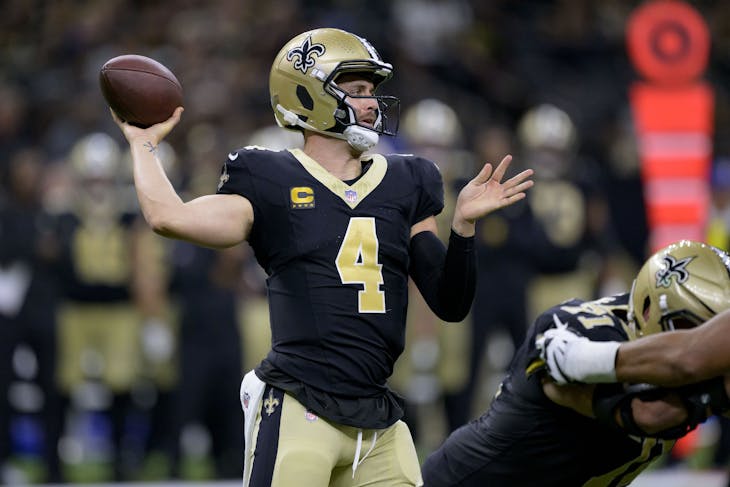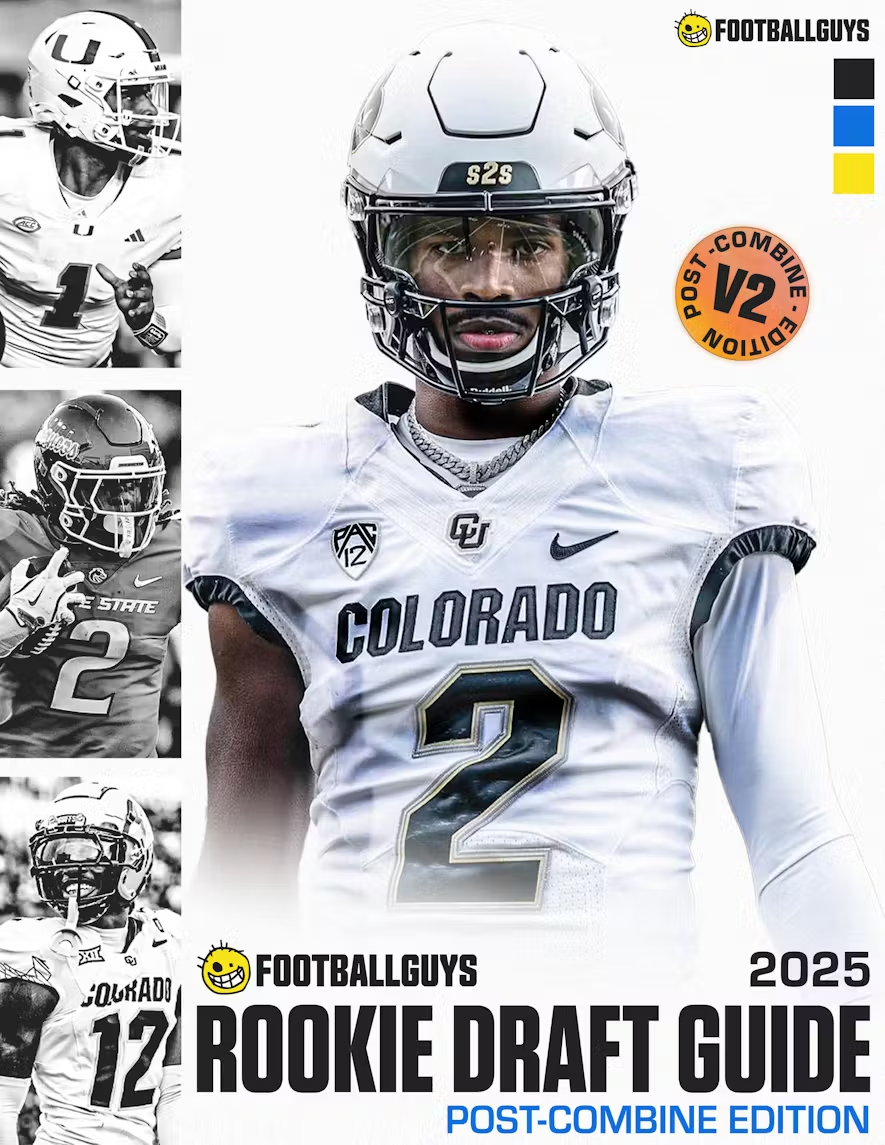
When the Oakland Raiders re-signed Michael Crabtree to a long-term deal this week, they were locking in a foundation of skill position players for their offense.
The Raiders obviously have Derek Carr and Amari Cooper, but their youth on offense stretches through many more positions. Crabtree is a veteran, but he's not old. Gabe Jackson and Rodney Hudson combine youth and experience in the middle of the offensive line, while Latavius Murray offers a potential feature back behind Derek Carr at quarterback. Carr has been hugely productive this season with these skill position players and a strong offensive line, a line they should be able to keep in tact if they can adequately replace their only old offensive piece, Donald Penn.
Everyone knows the primary pieces of the Raiders offense, but General Manager Reggie McKenzie has done a good job of finding talented complementary pieces also.
In the slot, the Raiders have got great production from a second-year receiver who previously went undrafted. Seth Roberts has just 27 receptions this season but those receptions have accounted for 423 yards, a 15.7 average per catch, and five touchdowns. Roberts has struggled with drops at times, but he has also made a number of very impressive receptions and shown off a wide skill set that should allow him to enjoy prolonged production as an inside receiver.
Roberts didn't play at all as a rookie. He spent his whole first season on the practice squad, developing so he could earn that role in his second season. The other complementary piece in the Raiders offense who needs to be watched out for isn't on the practice squad, but he is developing in the background for next season.
When Reggie McKenzie drafted Clive Walford, he understood that he was adding the third-round pick to an offense that wasn't going to need him immediately. Walford would slot into the depth chart behind Mychal Rivera and Lee Smith. Rivera was most similar to him as the receiving option, while Smith acted more as a blocker. Both River and Smith have played more than Walford to this point in the season, but Walford has flashed some of the athleticism and ball skills that made him a relatively high draft pick.
Through 12 games he has caught 21 passes for 251 yards and three touchdowns.
Like with Roberts, Walford has had his negatives, but the positives overshadow them. Firstly, let's look at the slot receiver.


What has made Roberts a relevant fantasy option this season is his work in the redzone. He has five touchdown receptions and all of them have come in the redzone. He added another in the preseason that also came in the redzone. Roberts isn't a spectacular player just yet, he is developing. He doesn't show off outstanding athleticism or route running, but he is both technically and athletically well-rounded. Everything he does comes comfortably to him.
This well-rounded ability separates him from your typical slot receivers, but it's also his knack for making receptions against tight coverages.
In both of the above gifs, Roberts doesn't create huge separation against his defensive back though he does run good routes. He puts himself in a spot where Carr can fit the ball in to him. While neither play requires Roberts to make a hugely athletic adjustment to pull the ball in from away from his body, both require him to show off concentration at the catch point. A lot of receivers would be bothered by the proximity of the coverage, distracting themselves from approaching the ball properly in the air.
Roberts isn't what Antonio Brown was early in his career. He doesn't jump off the screen every time the ball goes in his direction. His own play and his situation suggests that he is someone who needs to be monitored though. Even if just as a deep sleeper, there is definite starter potential there.
Walford isn't a deep sleeper. If he had fallen further in the draft he would likely be roaming under the radar, but third-round picks come with more caché in the fantasy community than those who drop into the unknowns of the fourth, fifth, sixth and seventh rounds. His limited production this season will help to stem the tide, while his spot on the totem pole of Raiders receivers(behind Crabtree and Cooper at the very least) will suppress his stardom.
It's tough to know what Walford can be because of how early we are in his development process. While playing for Miami at the college level, Walford proved to be an intriguing athlete with decent ball skills and limited blocking ability. In the NFL, he looks set to be a deep threat from the middle of the field. A receiver who will make his greatest impact running vertical routes downfield.
Against the Denver Broncos this past week, it was on those routes that Walford stood out.

Derek Carr didn't have his best game of the season and Walford's production struggled because of it. On two occasions the tight end was able to come open against man coverage on deep corner routes, but his quarterback overthrew him to the point that the passes were impossible to catch. The quarterback didn't miss him when he ran down the left seam for his first reception though.
With the pocket collapsing around him in the pocket, it was no surprise that Carr's pass wasn't perfect. It led Walford slightly too far downfield. The tight end showed off impressive ball skills to comfortably pull it in while in full stride. Considering the coverage and when he brought his eyes back to the quarterback, Walford couldn't have known if he was exposing himself to a huge hit by extending or not.
Fortunately for him he wasn't, but the willingness to work against the unknown without flinching is definitely a positive.
Walford not only completed the catch, he also managed to maintain his balance and continue downfield before being chopped down from the arriving safety. This didn't gain him many yards on this occasion, but it should help him be a more dangerous threat with the ball in his hands on other occasions when he has more space to work in.

Any tight end in the league, especially one that measures 6'4", will be heavily judged on his ability to make contested catches. Tight ends typically don't create as much separation as receivers, so they are expected to use their size at the catch point. Walford has shown on occasion this season that he can make impressive receptions. His first against the Broncos was an impressive one even though it wasn't against tight coverage.
This play didn't count. It didn't register any yardage, he didn't get a PPR point for a reception and it wasn't a touchdown. It was impressive though.
Walford makes this reception over the tight coverage while walking the sideline. One milimetre of his toe touches out of bounds when he lands though, so the play was overturned by replay. Even considering that a fraction of his toe was out of bounds, the play on the ball and his footwork generally was impressive. He showed comfort and natural ability to position himself and act in such a way that maximised his opportunity to make a play. He was just unfortunate.

As a big tight end, Walford isn't going to spend a huge amount of time working against cornerbacks outside. Instead, most of his routes will go against linebackers and safeties over the middle of the field. This makes him a more dangerous threat after play action because he should have the ability to simply run away from most linebackers.
Late on against the Broncos, the Raiders looked to Walford for an important first down. He was very quick to work his way across the field after lining up on the left side of the offensive line before making a comfortable catch on the right side of the field. He gave his quarterback an easier throw by creating separation and a wider window.
You always have to be careful when projecting success over the long term for a whole offensive unit. Entering this season, it appeared that the Philadelphia Eagles and Miami Dolphins would both be offenses you wanted pieces of, yet both units have vastly underachieved.
The Raiders aren't like the Eagles and Dolphins because it's not as much about scheme and past performance as it is the young foundation. Even though they haven't been together for a long time, there is clearly an abundance of talent in Oakland and it's talent that complements itself well. Getting Carr, Crabtree or Cooper will be an expensive investment next season, so looking at the ancillary options could prove to be the more valuable play.
Although they will face stiff competition for their spots, Roberts and Walford appear to be in the pole positions for the third and fourth receiving spots.

_png)
